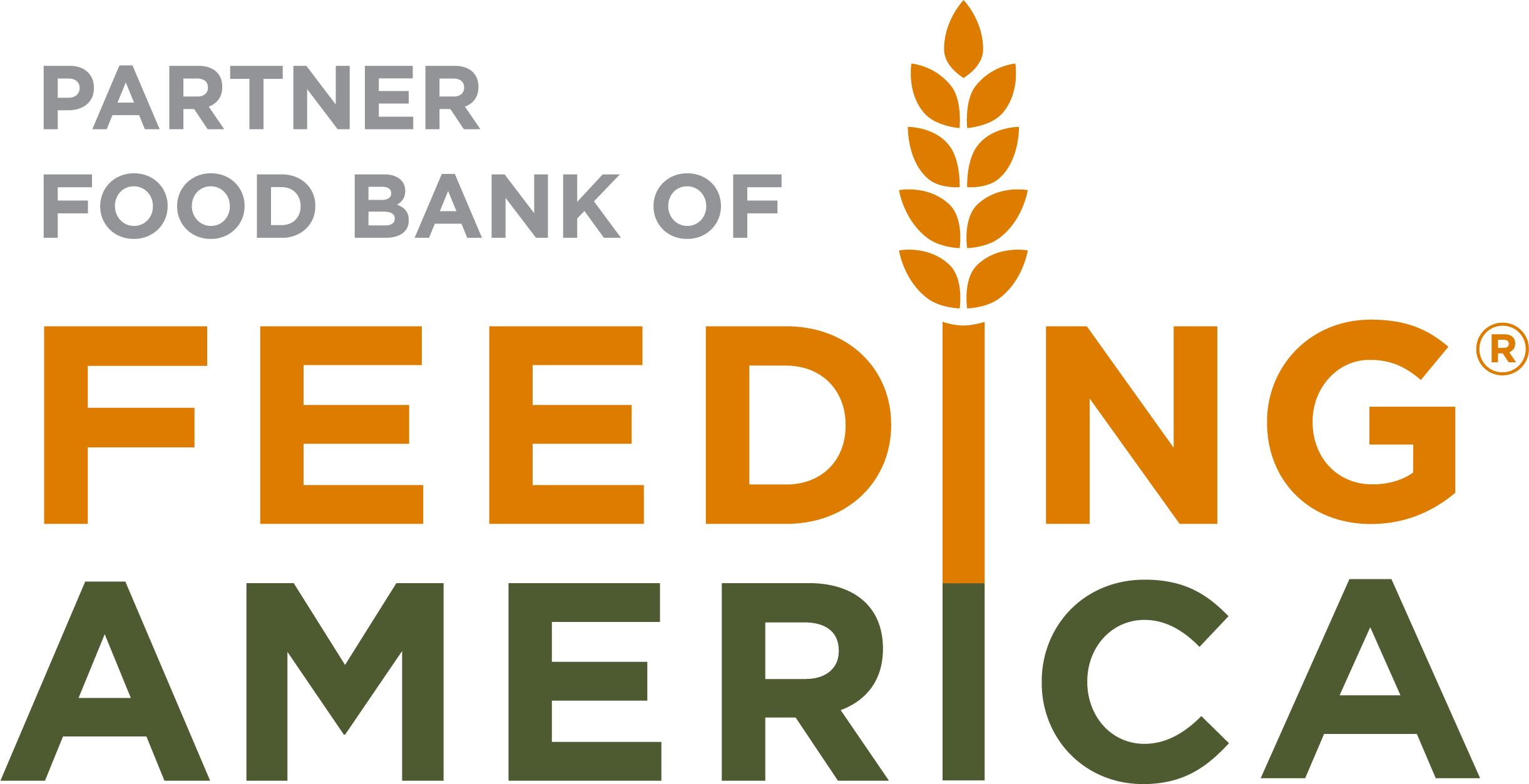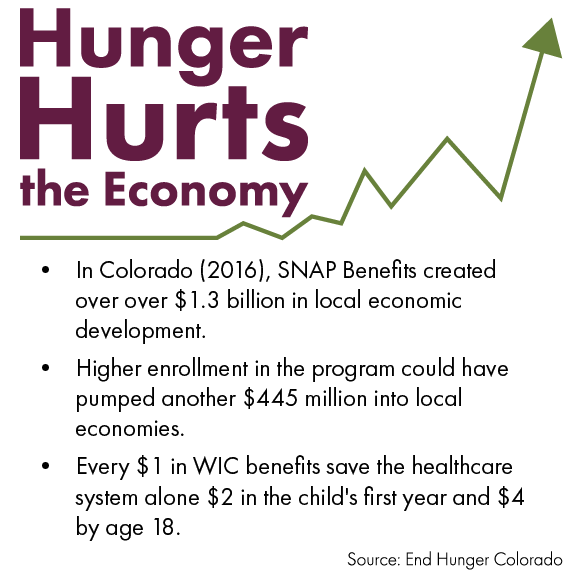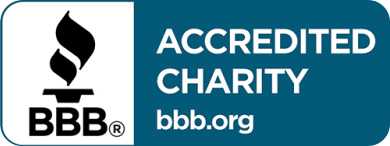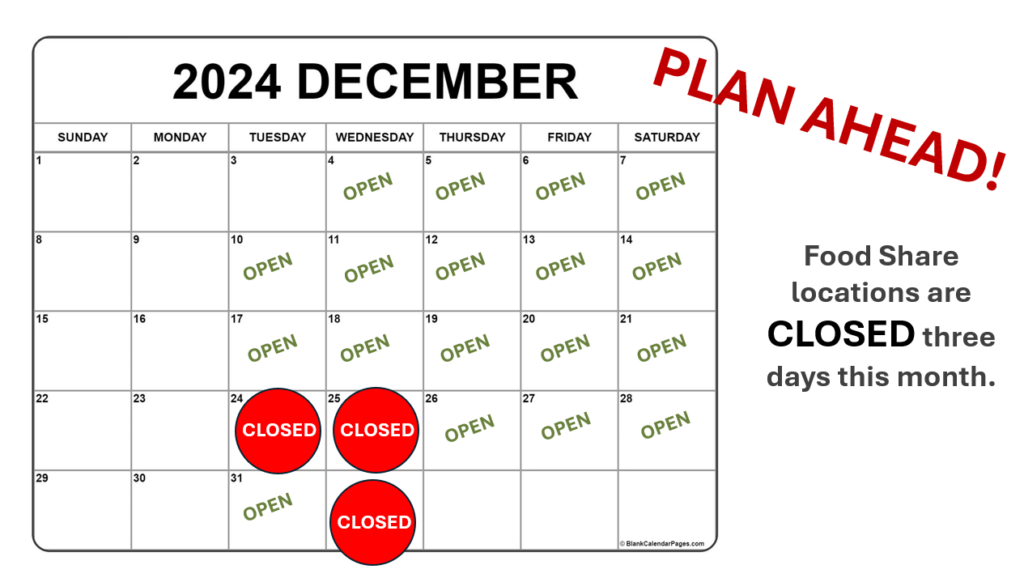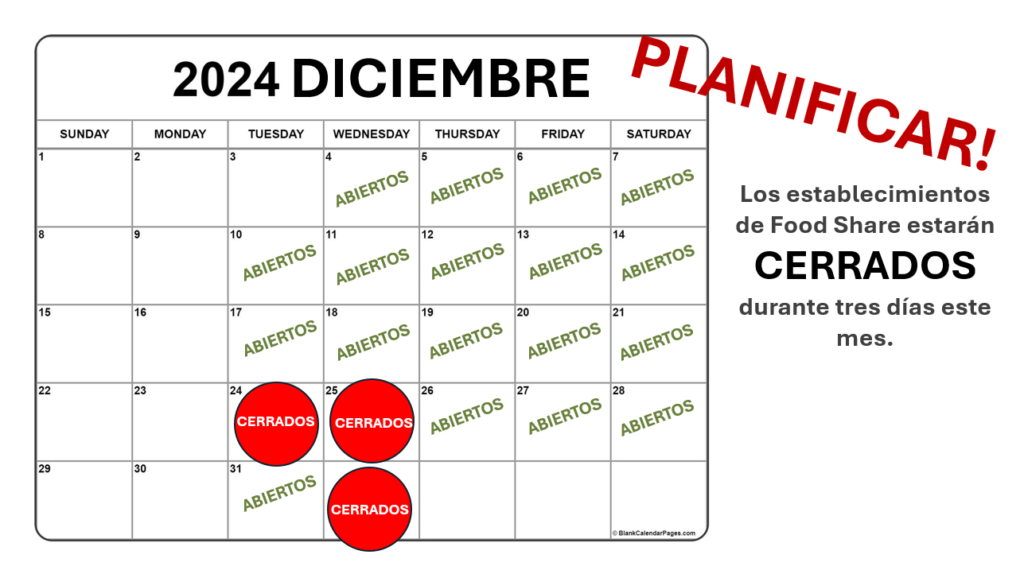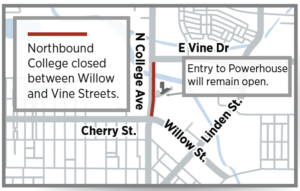The Supplemental Nutrition Assistance Program (SNAP, previously food stamps) is an important program that helps families afford food to access and maintain a basic diet, generates business for retailers, and boosts local economies.
There are about 248,000 retailers — from superstores to farmers markets — across the country… and about 300 in Larimer County. SNAP benefits increase low-income households’ purchasing power so they can buy the food they need directly from stores; adding dignity and ease to users’ lives.
Most find it easy to see how SNAP benefits the person and family receiving them: food on the table they likely would not have otherwise. However, the ways SNAP benefits all people in the community by boosting the local economy remains largely unknown.
SNAP accounts for about 8% of the food U.S. families buy for their homes.

SNAP generates business for retailers of all types and sizes.
SNAP retailers include almost any place that sells food: big, box superstores, major national grocery chains, local small specialty grocers, convenience stores, and farmers markets.
Since Americans live in such differently populated areas, including cities to very rural communities, the ability to use SNAP benefits from a large number and a wide variety of authorized retailers help ensure low-income families across the country can regularly access food. Though SNAP participants in some areas of the country, particularly rural areas, still have inadequate access to food stores, most can easily redeem their benefits. In Larimer County, there are about 300 retailers at which SNAP benefits can be used (see table below).
SNAP provides important support for small business.
While over 80 percent of SNAP benefits are used at larger stores, including superstores (eg. Walmart, Target, and Costco) and supermarkets (eg. King Soopers and Safeway), about 80 percent of stores that accept SNAP benefits are smaller stores. These include many locally owned businesses such as private groceries, convenience stores, dairies, butchers, bakeries, and farm stands. For these small businesses, SNAP is an important revenue source for these stores; particularly in high-poverty areas, where SNAP purchases can account for a significant share of a retailer’s total sales.
Because most households redeem their monthly SNAP benefits quickly and is often the only or primary way these households can purchase adequate food, SNAP is one of the most effective forms of economic stimulus during a downturn.
In 2009, the peak year of the Great Recession, $50 billion in SNAP benefits were spent in local stores, generating about $85 billion in local economic activity, even as the overall economy was struggling.
When the economy is weak and unemployment is elevated, every dollar in SNAP benefits spent increases the gross domestic product by $1.54.
In Larimer County alone, SNAP brings almost $6 million of economic benefit to the local economy annually.
In Colorado, SNAP participants received:
- $639 million in benefits in 2019,
- $912.98 million in 2020,
- $1.3 billion in 2021, and
- $1.47 billion in 2022 (including temporary pandemic relief in 2020 through 2022).
94% of SNAP benefits are spent on food >>
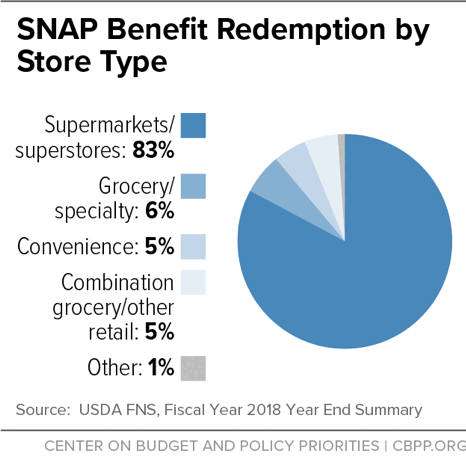
Colorado SNAP Retailers by Store Type (2019)
| Super-store | Super-market | Grocery Store | Convenience Store | Other Retailer | Farmers Market | Total |
| 390 | 220 | 752 | 1256 | 138 | 55 | 2811 |
SNAP Retailers by Store Type in 2nd Colorado Congressional District
| Super-store | Super-market | Grocery Store | Convenience Store | Other Retailer | Farmers Market | Total |
| 63 | 31 | 67 | 118 | 15 | 10 | 304 |
SNAP stimulates economic activity during an economic downturn.
SNAP is actually one of the nation’s primary counter-cyclical government assistance programs.
That means the simple existence ad use of SNAP benefits counteract other effects of an economic downturn, such as unemployment rates. SNAP provides assistance to more low-income households during an economic downturn or recession and to fewer households during an economic expansion, serving as an automatic stabilizer to the economy.
The rise in SNAP participation during an economic downturn results in greater SNAP expenditures which, in turn, stimulates the economy.
During a recession, households that lose part or all of their incomes (usually from employment) become eligible and participate in SNAP. Moreover, for households that were already participating before the recession, SNAP benefits usually increase if their income falls.
Not only do SNAP benefits support a household’s food purchasing needs, benefits also augment the incomes and spending of others (such as farmers, retailers, food processors, and food distributors, as well as their employees); this, in turn, has ripple effects throughout the community.

